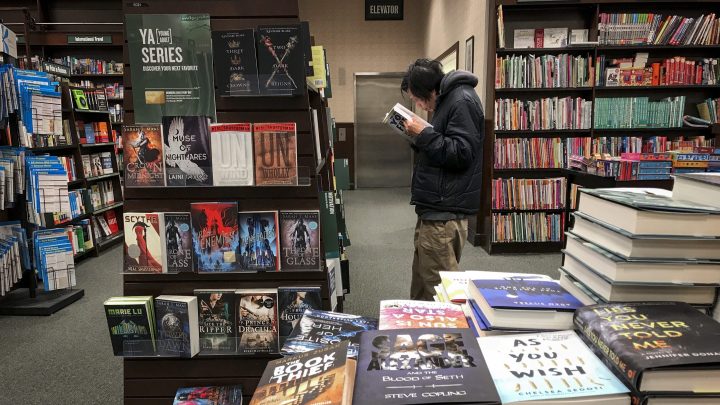
Authors feel economic impact when their books are banned

For the first two years after Maia Kobabe’s graphic memoir, “Gender Queer,” came out in 2019, nothing all that remarkable happened.
“It was really just receiving kind of like normal, nice, debut book author reviews, but not making national headlines,” Kobabe said.
That’s changed in the last couple of years, as “Gender Queer” has been banned all over the country, from Florida to Michigan to Idaho.
Kobabe, who identifies as nonbinary and uses the gender neutral Spivak pronouns e/em/eirs, wasn’t all that surprised when the book faced its first challenge in 2021.
“I am very aware that queer, trans and nonbinary narratives frequently receive pushback in this country,” e said. “But what surprised me was the volume of the challenges, how quickly they seem to spread, and — at this point — how long this has remained a top news story.”
Book bans have surged in the last couple of years in Florida, Texas and more than 30 other states. In the 2022 to 2023 school year, more than 1,500 different books were banned in public schools around the country. That’s a 33% increase from the year before, according to the nonprofit PEN America, which defends free expression in the U.S. and around the world.
While many of the books being banned have to do with race, sexuality and gender identity, that’s not the case for all. And for many banned authors, there are notable economic impacts, in addition to mental and emotional ones.
For Kobabe, responding to all the bans and challenges has been time consuming and stressful, “but it’s undeniable that they have boosted my career as an author. I have seen a huge rise in sales,” e said. “And it has also led to a lot of other speaking opportunities.”
That’s been the case for Ellen Hopkins, too — at least lately. She’s a prolific New York Times bestselling author who mostly writes for kids and teens.
“As far as I know, all 14 of my young adult novels have been banned somewhere,” she said.
Three of those YA books — “Tricks,” about teen prostitution; “Crank,” about meth addiction, and “Identical,” about childhood sexual abuse — are currently on PEN America’s list of the top 10 most-banned books.
Because of that, Hopkins has also been getting a lot of press recently and has seen a spike in sales. But in years past, when her books were banned and there was less media attention, sales dried up and her royalty checks shrunk.
“Because school libraries, specifically, are a big part of our market,” she said. “So when they’re not allowed to repurchase them, then of course it’s going to affect book sales.”
The reality is, most authors whose books get banned don’t get much media attention — especially now that so many are being targeted.

While some books facing bans are bestsellers, “others are books that are lesser well-known,” said Kasey Meehan, program director of Freedom to Read at PEN America. “And it can be quite detrimental to the economics of that book, to be banned in that way.”
That’s not just in terms of sales. Many banned authors who write books for kids and young adults have seen invitations to speak at schools dry up too.
“I used to rely on school visits,” said Mike Curato, an author and illustrator. “Paid school visits were a very large part of my income, maybe a quarter to a third of my annual income.”
Not anymore, now that his young adult graphic novel, “Flamer,” which is about a boy dealing with bullying and racism and coming to terms with his sexual identity, and two other books he illustrated have been banned in a bunch of schools.
“I have not been getting the invitations that I used to get,” he said. “I get a few here and there, but it’s nothing like the income that I used to rely on.”
He’s heard from many fellow authors of banned books who are experiencing the same thing. For Curato, there are other costs too that are harder to quantify, including the impact on his mental and emotional health and on his time.
“I’ve lost so much time because of all of this,” he said. “I have a book due at the end of the year, and I’m behind. I’m behind because I’ve dealt with so much book banning stuff. And, you know, I want to be an advocate, I want to help where I can, but all of that costs me.”
It’s work that’s important to him and to many authors facing book bans. But it can be consuming, and it’s generally unpaid. And when you’re not a super-famous author, Curato said, you have to hustle constantly to make a living.
There’s a lot happening in the world. Through it all, Marketplace is here for you.
You rely on Marketplace to break down the world’s events and tell you how it affects you in a fact-based, approachable way. We rely on your financial support to keep making that possible.
Your donation today powers the independent journalism that you rely on. For just $5/month, you can help sustain Marketplace so we can keep reporting on the things that matter to you.

















